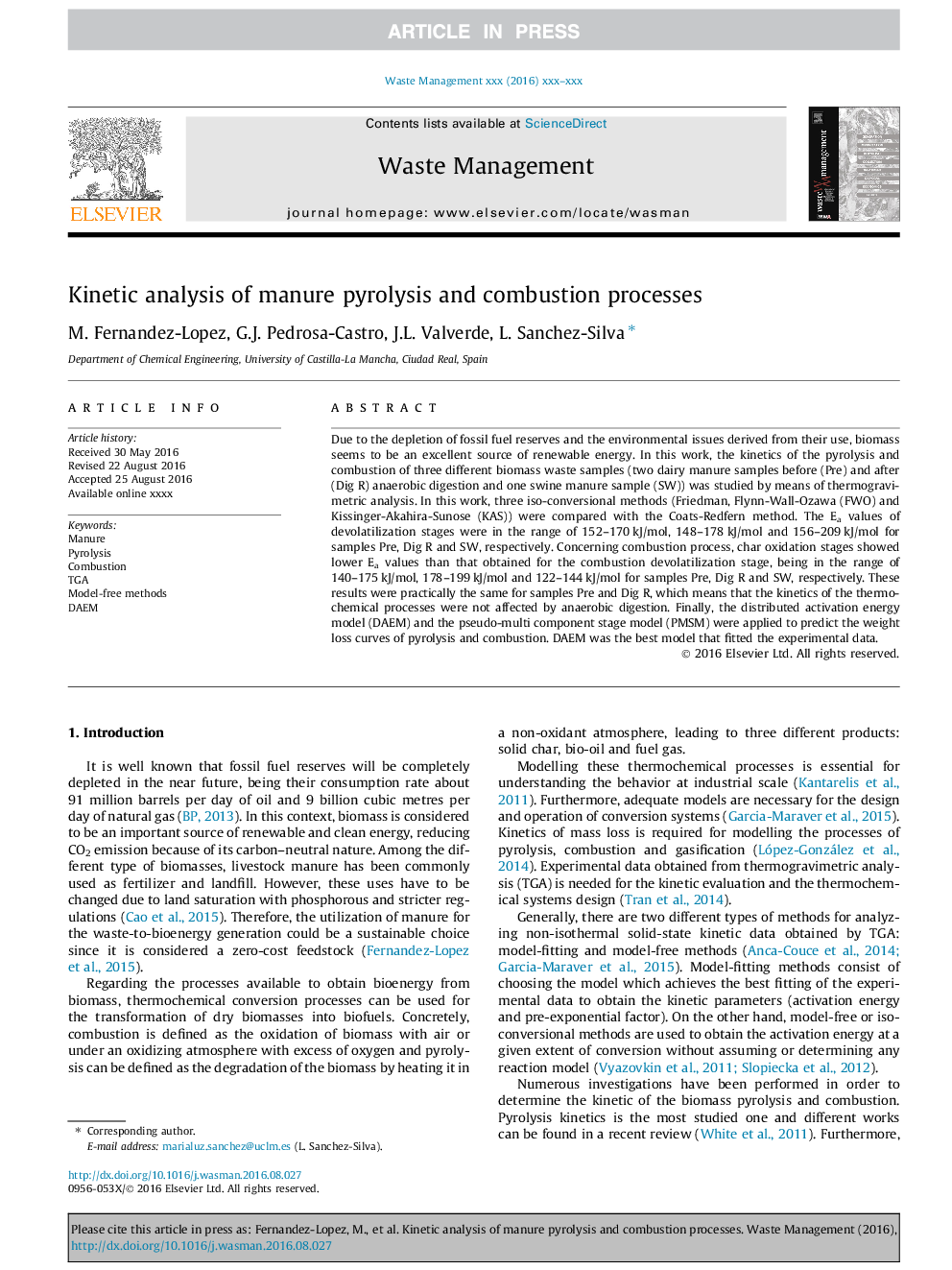| Article ID | Journal | Published Year | Pages | File Type |
|---|---|---|---|---|
| 5757093 | Waste Management | 2016 | 11 Pages |
Abstract
Due to the depletion of fossil fuel reserves and the environmental issues derived from their use, biomass seems to be an excellent source of renewable energy. In this work, the kinetics of the pyrolysis and combustion of three different biomass waste samples (two dairy manure samples before (Pre) and after (Dig R) anaerobic digestion and one swine manure sample (SW)) was studied by means of thermogravimetric analysis. In this work, three iso-conversional methods (Friedman, Flynn-Wall-Ozawa (FWO) and Kissinger-Akahira-Sunose (KAS)) were compared with the Coats-Redfern method. The Ea values of devolatilization stages were in the range of 152-170Â kJ/mol, 148-178Â kJ/mol and 156-209Â kJ/mol for samples Pre, Dig R and SW, respectively. Concerning combustion process, char oxidation stages showed lower Ea values than that obtained for the combustion devolatilization stage, being in the range of 140-175Â kJ/mol, 178-199Â kJ/mol and 122-144Â kJ/mol for samples Pre, Dig R and SW, respectively. These results were practically the same for samples Pre and Dig R, which means that the kinetics of the thermochemical processes were not affected by anaerobic digestion. Finally, the distributed activation energy model (DAEM) and the pseudo-multi component stage model (PMSM) were applied to predict the weight loss curves of pyrolysis and combustion. DAEM was the best model that fitted the experimental data.
Related Topics
Physical Sciences and Engineering
Earth and Planetary Sciences
Geotechnical Engineering and Engineering Geology
Authors
M. Fernandez-Lopez, G.J. Pedrosa-Castro, J.L. Valverde, L. Sanchez-Silva,
